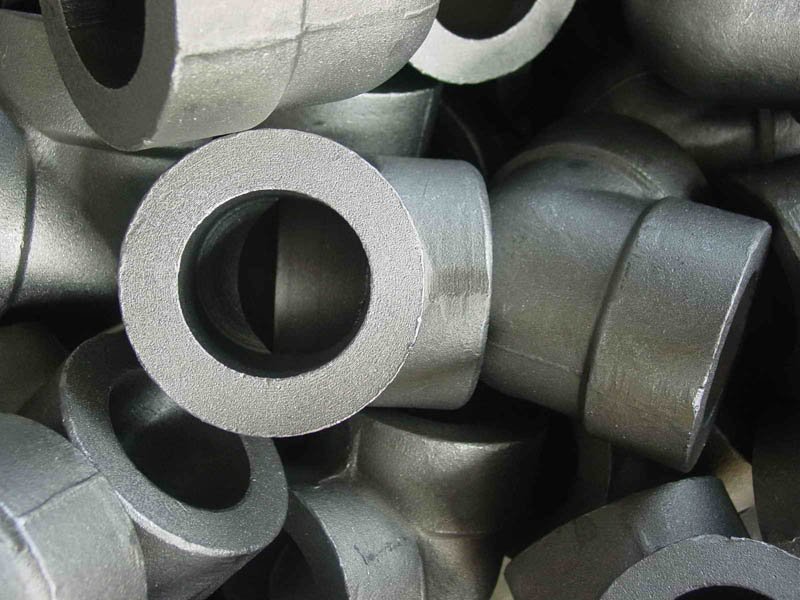Socket Weld and Threaded Fittings (ASME B16.11)——Eathu
Socket Weld and Threaded Fittings (ASME B16.11)——EATHU FITTINGS
FORGED FITTINGS ASME B16.11
How to Define Forged Fittings?
Forged fittings are a type of pipe fittings that are used for small bore pipes and piping systems, typically with a diameter below 4 inches for Class 3000 fittings, and below 2 inches for fittings in Class 6000 and 9000. These fittings are manufactured by forging and machining solid steel, and they are available in various shapes such as elbows, tees, reducers, unions, and couplings. They are specifically designed for oil and gas applications, as specified by the ASME B16.11 standard. For larger pipe sizes, ASME B16.9 butt weld fittings should be used instead.

Forged vs. Buttweld Fittings: A Comparison
When it comes to piping systems, the choice between forged fittings and buttweld fittings depends on the diameter of the pipes being used. Forged fittings are commonly used for systems with a diameter below 2 or 4 inches, specifically 4 inches for 2000#/3000# fittings and 2 inches for 6000#/9000# fittings. On the other hand, buttweld fittings are typically used for larger diameter piping.
There are two main types of forged fittings: socket weld fittings and threaded fittings. Socket weld fittings are connected to pipes through fillet welds, while threaded fittings require the pipe to be screwed onto the fitting.
To ensure compatibility with ASME B36.10 and ASME B36.19 carbon, alloy, stainless steel, and nickel alloy pipes of small bore size, forged fittings (both socket weld and threaded) are designed to meet the specifications set by ASME B16.11, MSS SP 75, MSS SP 83, and MSS SP 95.
Unlike buttweld fittings, which are created by cutting, bending, and shaping seamless or welded steel pipes, forged fittings are manufactured from solid blocks of steel. These blocks are machined to achieve the final required shape within the specified tolerances outlined in the applicable specifications mentioned above.
In conclusion, the choice between forged fittings and buttweld fittings depends on the diameter of the piping system. Forged fittings, which are machined from solid steel blocks, are typically used for smaller diameter systems. On the other hand, buttweld fittings, created from shaping seamless or welded steel pipes, find their application in larger diameter piping systems.
Forged Fittings Types
Socket weld and threaded fittings are available in multiple shapes (elbows, tees, caps, adapters, couplings, etc), sizes (bore sizes between 1/8 and 4 inches, and ratings as 2000#, 3000#, 6000#, 9000#) and material grades (the most common are ASTM A105, ASTM A350 LF1/2/3/6 for low-temperatures, ASTM 182 for corrosive, high-temperature applications). The class of the fitting represents the maximum allowed pressure that the device can withstand.
Class 3000 fittings are used for pipes in schedule 80/XS; Class 6000 for pipes Sch. 160; Class 9000 fittings for pipes with larger wall thickness (XXS).
Forged Elbow 45/90 Degrees
Forged elbows are used to change the direction of the piping system by 45 or 90 degrees. Forged elbows are manufactured according to ASME B16.11 in various material grades, either with socket weld or threaded pipe connections. A special type is the so-called “street elbow”.
Forged Tee (Equal/Reducing)
Forged tees are used to branch a pipe at 90 degrees. Tees can be straight (equal) or reducing.
Forged tees ASME B16.11 are available with socket weld or threaded connections (NPT or BSP). The dimensions of forged tees are covered by the MSS SP 75 and the ASME B16.11 specifications.
Forged Lateral
Forged laterals feature a Y shape and are used to branch a pipe at 30-degrees (or different angles, according to the piping specifications).
Forged Plug (Round, Squared, Hex)
Forged plugs are available with a round, squared or hexagonal head and are used to blind pipes.
Bushings
Hexagonal bushings are manufactured in accordance with ASME B16.11 and are used to join two threaded items of a different size.
Couplings (Half, Full)
Couplings are forged fittings manufactured in accordance with ASME B16.11 and are used to join pipes.
They are available in half or full size and with socket weld or threaded connections (or a combination of the two for special piping applications).
Reducers and Reducer Inserts
Reducers are available in two main types, called 1 and 2. They are used to connect pipes and reduce the bore size.
Union
Unions are available in the male to female, female to female types, lug nut, and Rockwood design. Unions comply with the MSS SP 83 standard.
EATHU PIPE FITTINGS

